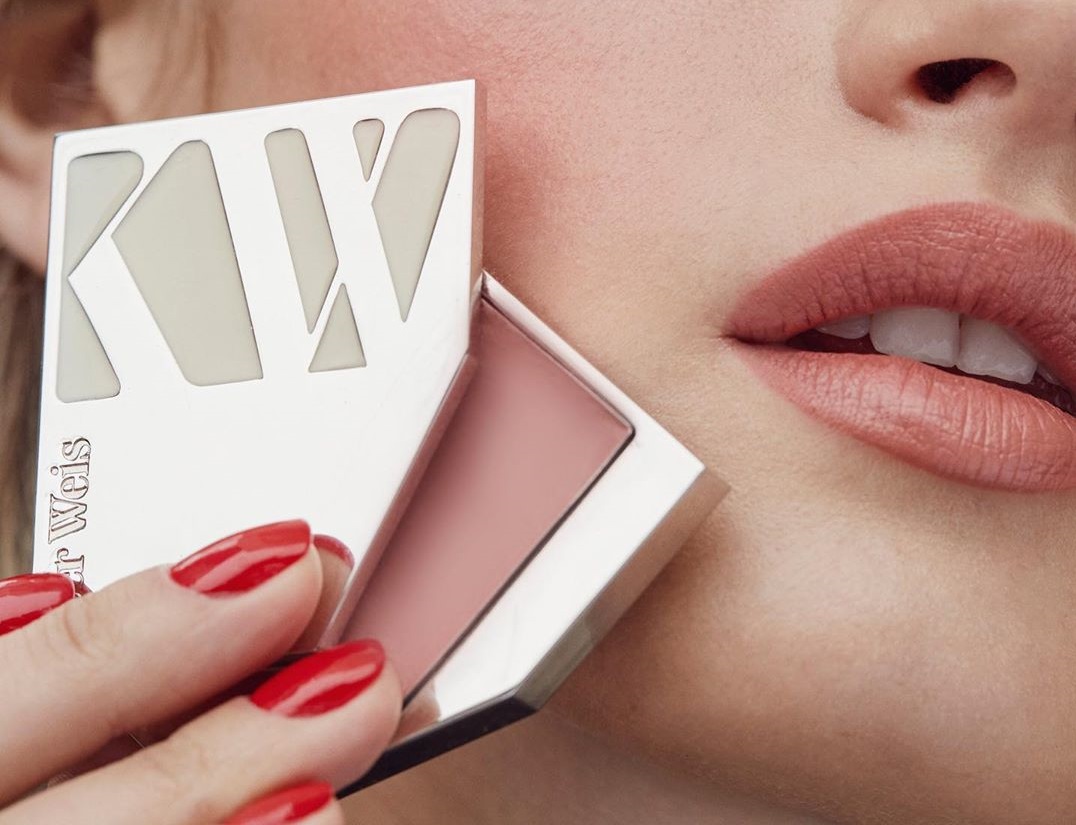
Kirsten Kjaer Weis didn’t always live in NYC—where she now leads a makeup revolution. Hailing from Denmark, Weis grew up on a farm where her life was rooted in organics and nature. This upbringing had shaped her makeup brand, Kjaer Weis, to be what we know it as today.
“I think at the time when I was growing up everything we did was organic. Everything we ate came out of our own garden. It was second nature. I never thought of it. All I wanted to do was go to the city, but there was always this subconscious love of nature with me. As I grew older and had been living in cities, it dawned on me that growing up on a farm had a bigger effect than I thought,” Weis said.

But long before Weis founded her makeup brand in 2010, she began her career by studying in Paris to become a makeup artist. Going on to work for fashion magazines such as Vogue, ELLE, and Marie Claire, Weis quickly found that she faced a consistent problem: her favorite makeup brands were causing skin problems.
Some models would get bad irritations, breakouts, or be allergic to the ingredients. Weis didn’t agree with how people could accept this “absurd norm,” as she called it, so by creating her own makeup, she’s been fighting the norm ever since.

As an admirer of both design and the environment, Weis worked with award-winning creative director Marc Atlan for two years to make the packaging for her non-toxic makeup. Her products have a luxurious silhouette, but Weis does not compromise on sustainability for a stunning architecture.
From lipstick, mascara, eyeshadow, blush, and foundation, all of Kjaer Weis’ product containers are designed to be kept for a lifetime. With refills made available for purchase, the container can be endlessly used. This improves upon an industry that throws away shocking amounts of plastic containers each year.
“I was looking for a biodegradable packaging that you could throw into nature and it would dissolve,” explained Weis. “But I realized that wasn’t very beautiful. I had a vision of creating a design piece but I wanted it to be sustainable. Finding a texture, a product, that could look luxury but could also be recycled. And typically if something is recyclable, than it looks recyclable.”

“I had always been obsessed with designer Marc Atlan. His designs are incredibly exceptional. One for example, the Comme de Garcons perfume bottle, looks like a silver pebble. It lays flat, it’s smooth, beautiful, heavy, and it’s timeless. Every time I held it it made me feel so overwhelmed with beauty. I wanted that same feeling in my packaging,” stated Weis.
“So I emailed him out of the blue. I told him what I wanted and he liked the idea. I packed up my mood board and went to see him and we hit it off! We started working together on the designs. I wanted something like a piece of jewelry and two months later he told me found this metal that’s not recyclable, but it could be made to have a refill system. There were may details to get right: the click, the slide of it opening, the feeling of the metal. It was so fun to hold. And then for the box, we added in the red paper textured paper, and it really felt like something special. It took two years all together to get it right.”
The company also offers transparency. They provide a detailed list of ingredients and their origins: a beneficial resource for everyone, but especially for those with allergies or sensitive skin. Kjaer Weis is guiding the way in reshaping an industry that has historically used harmful ingredients and wasteful packaging.
“It’s a movement everywhere to be more conscious and natural. Food. Skincare. Makeup is the last one to catch on because it’s harder to make it without the chemicals.” noted Weis. “But now I hope it’s becoming the norm to at least use natural products, if not organic. It’s an organic ingredient if the field that it grew in is chemical free over 3 years, or if it’s just from a field then it’s natural.”
“Still, natural is better than synthetics,” added Weis. “If the performance is on par, and the experience of buying something pretty is there, and it’s not bad for you. That’s the dream. We used to see women look for organic products only when they got pregnant or if they got sick. Now people think about it more. There is a rising demand and it’s all about education. Organic, sustainable, and high performing, you can have all these things. You don’t need to compromise.”





